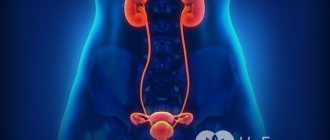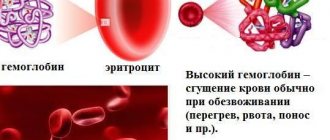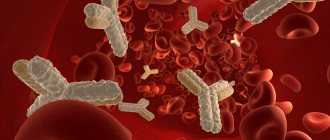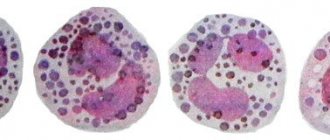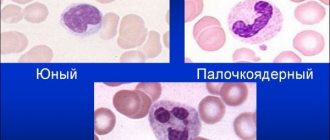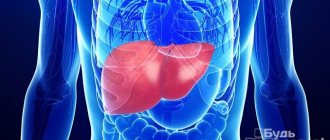General information about parathyroid hormone
In medicine, parathyroid hormone is a hormone produced by the parathyroid glands. According to its chemical structure, it belongs to the group of single-chain polypeptides and is a substance of protein nature, consisting of 84 amino acids devoid of cysteine. Parathyroid hormone has several other interchangeable names, such as:
- parathyrin;
- parathyroid hormone;
- PTG;
- parathyroid hormone (abbreviated PTH).
Parathyroid hormone is the most powerful of 3 hormones (along with calcitonin and vitamin D3) that regulate the level of calcium and phosphorus in the blood. It is produced by the parathyroid glands (PTG) - each person has 4 of them. There are cases of more or less of these organs - in about 3% of people. The glands are located symmetrically - in pairs below and above the thyroid gland (on the back surface or inside).
Parathyrin is formed from its predecessor with lower biological activity - proparathyroid hormone (proPTH). It is synthesized by the parathyroid glands, where it is converted into PTH through proteolytic cleavage. The level of the latter may change under the influence of negative factors:
- increase, which leads to hypercalcemia, which provokes the development of kidney stones, stomach and duodenal ulcers, pancreatitis;
- decrease, which causes hypocalcemia to form, which causes convulsions (even lethal tetany), pain in the abdomen and muscles, and tingling sensations in the extremities.
Meet parathyrin
For the health of each of us, the correct hormonal background is of great importance, which means the entire set of hormones in the body and their interaction in ensuring its growth and development, as well as maintaining it in a healthy state. Hormones are biologically active substances that are synthesized in the endocrine glands and, when produced in the right quantities, have a significant impact on many factors that ensure the stable functioning of organs and tissues. Parathyrin is a hormone that carries a very important load in the body: it ensures calcium-phosphorus metabolism. Both chemical elements are important in the life of every person. Calcium is a chemical element that ensures the functioning of the musculoskeletal system.
Calcium is an important component of cartilage and bone tissue; Calcium ions are part of cell membranes. Calcium is not only important for healthy bones, but also for stable functioning of the nervous system and blood that clots well. Phosphorus is the main element of phospholipids - enzymes that make up the cell membrane. It, like calcium, is part of bone tissue, controls biochemical processes in the body and promotes the absorption of glucose by the intestines. Both chemical elements, acting in the body, ideally form a balance, which is maintained thanks to PTH.
Parathyroid hormone is produced in the parathyroid glands - epithelial bodies. Being a biologically active substance, parathyroid hormone actively affects:
- Function of the musculoskeletal system;
- Kidney activity;
- Libido in women and men, potency in men;
- Composition of blood serum;
- Skin health;
- Intestinal absorption of carbohydrates.
The main functions of parathyroid hormone are somehow related to calcium and calcium-phosphorus metabolism. For example, parathyroid hormone increases the concentration of phosphorus in the urine and, conversely, prevents too much calcium from being excreted from the body (in the same way). If the body produces too much calcium, parathyroid hormone is responsible for storing it in the bones. If, on the contrary, there is a lack of calcium in the body, then PTH “orders” so that calcium from the bones enters the blood.
PTH is important for its connection not only with calcium and phosphorus, but also with other substances necessary for the body - microelements and vitamins: primarily magnesium and vitamin D.
Parathyroid hormone is related to the concentration of calcium in the body according to the feedback principle: the more calcium in the body, the less PTH is produced. On the contrary: less calcium means more PTH is produced, which begins its work of releasing calcium from the bones, retaining this trace element in the kidneys and enhancing its absorption from the intestines. As soon as the level of calcium concentration in the body reaches normal, the activation of parathyroid hormone decreases, because its goal is temporarily achieved: there is enough calcium in the body, the balance between calcium and phosphorus has been achieved.
The secretion of parathyroid hormone, based on the presence or absence of calcium-phosphorus balance, can be basal or pulse. Basal production of the hormone occurs at a relatively slow pace: it acts if there is enough calcium in the body. If balance is not achieved between the ratio of calcium and phosphorus, PTH begins to work in pulse mode: parathyrin is released into the blood sharply and repeatedly, as if pulsating (hence the name). Once calcium levels in the body are adjusted, parathyroid hormone production returns to basal levels.
Functions of parathyroid hormone in the body
The main functions of parathyrin are the regulation of calcium metabolism and control of phosphorus levels in the blood plasma. PTH is indirectly associated with the latter microelement. This is due to the fact that when calcium levels decrease, the amount of phosphorus, on the contrary, increases. The functions of parathyrin also include:
- an increase in the amount of vitamin D3, which additionally stimulates the absorption of calcium into the blood;
- deposition of excess calcium in the bones;
- removal of calcium and phosphorus from bone structures when they are deficient in the blood;
- a decrease in the amount of calcium excreted in the urine and a simultaneous increase in the level of phosphorus in the blood.
The role of parathyroid hormone
PTH or parathyroid hormone is a biologically active compound that is the secretion of the pancreas - paired organs located on the posterior surface of both lobes of the thyroid gland. The whole parathyroid hormone molecule contains 84 amino acids and has a short half-life (approximately 4 minutes). This state is the main bioactive form of this substance.
Its main action is aimed at regulating the concentration level of two vital elements - phosphorus and calcium in the extracellular fluid. The content of PTH directly depends on the content of calcium, phosphorus, magnesium and vitamin D, and the regulation of its production is carried out according to the feedback principle. When the calcium level in the blood decreases (hypocalcemia), the pancreas intensively produces PTH, and when there is hypercalcemia (increase), its synthesis is reduced.
Such mechanisms ensure stable levels of the element in the blood, and, therefore, prevent the development of various pathologies. An increase in the concentration of the hormone activates osteoclasts (cells that destroy bone tissue), promotes bone resorption, which leads to the release of calcium from the bones.
The hormone increases its absorption from the intestine, prevents excretion by the urinary system, and suppresses the reverse reabsorption of phosphorus. The antagonist of this hormone is calcitonin, a substance secreted by the thyroid gland. With sufficient levels of the element in the blood, PTH synthesis decreases, but with pathologies that provoke its excessive production (hyperparathyroidism), a number of disorders occur.
These include hypercalcemia, generalized osteoporosis, vascular calcification, hyperphosphaturia, damage to the gastrointestinal mucosa. Insufficient production of the hormone (hypoparathyroidism) leads to hypocalcemia and hyperphosphatemia, which is often combined with seizures and tetany.
Important! It is necessary to conduct a simultaneous assessment of ionized (free) calcium in the blood and parathyroid hormone, taking into account other laboratory and instrumental methods. This will provide an opportunity to differentiate similar pathologies and choose adequate therapeutic tactics.
The principle of phosphorus-calcium metabolism
What is dangerous about changes in parathyroid hormone levels?
When parathyrin secretion increases, hyperparathyroidism develops. In this condition, the activity of osteoclasts—cells that remove bone tissue by dissolving the mineral component and destroying collagen—increases. As a result, resorption processes begin to predominate: the bones soften, and osteopenia (loss of density) develops. The leaching of calcium from bone tissue in hyperparathyroidism is called parathyroid osteodystrophy. The main signs of this pathology are severe pain and frequent fractures.
With increased secretion of parathyrin, calcium washed out of the bones begins to be intensively absorbed in the intestines and accumulates in the blood. The consequence is hypercalcemia, which is indicated by the following signs:
- blood clotting disorder;
- arrhythmias;
- pancreatitis;
- constipation;
- peptic ulcers of the stomach and duodenum;
- muscle hypotension;
- kidney and gallstones;
- lethargy;
- mental disorders;
- fatigue.
When the amount of parathyrin produced in the blood decreases, the level of phosphates increases and hypocalcemia develops. Because of this, the following symptoms may be observed:
- early gray hair;
- hair loss;
- early cataract;
- frequent mood swings;
- muscle and abdominal pain;
- dental problems;
- brittle nails;
- arrhythmias.
Signs of increased parathyroid hormone levels
At the initial stage, there are practically no signs that parathyroid hormone levels are elevated. This can be determined by chance when hypercalcemia is detected.
Kidney stones are one of the symptoms of elevated PTH levels
Subsequently, the patient experiences the following symptoms from the urinary system:
- frequent urination;
- strong thirst;
- stones in the kidneys;
- frequent inflammatory processes in the kidneys (pyelonephritis).
In severe cases, renal failure may develop.
From the gastrointestinal tract, the following symptoms may appear:
- lack of appetite;
- nausea and vomiting;
- inflammatory process in the pancreas (pancreatitis);
- stones in the pancreas (calculous cholecystitis);
- stomach and duodenal ulcers;
- flatulence.
Symptoms from the musculoskeletal system include:
- osteoporosis;
- muscle pain and weakness;
- destruction of cartilage tissue of joints (chondrocalcinosis);
- frequent fractures.
The level of parathyroid hormone in the blood can be normalized with the help of hormonal medications. Bisphosphonates may also be used. They are prescribed by a doctor depending on the causes of the pathology.
If the level of parathyroid hormone in the body is elevated for a long time, complications from the nervous and cardiovascular systems may occur:
- increased blood pressure;
- increased excitability;
- confusion;
- drowsiness;
- depressive states.
In severe cases, high levels of parathyroid hormone can lead to the development of a hypercalcemic crisis. This is a serious disease that is fatal in 65% of cases. It almost always develops suddenly. The patient becomes weak and refuses to eat. Subsequently, muscle tone decreases, joint pain, neuropsychiatric disorders appear, and the functioning of the digestive system is disrupted.
Nausea is one of the symptoms of hypercalcemic crisis
Nausea, uncontrollable vomiting not associated with food intake, and abdominal pain that simulate acute appendicitis occur. Symptoms of acute pancreatitis may also appear or the ulcer may perforate.
The patient's body temperature rises to 40 °C, thirst, frequent urination and tachycardia occur. Pulmonary calcification is also observed, which is difficult to distinguish from severe pneumonia or pulmonary edema.
In the renal form of crisis, a patient with elevated levels of parathyroid hormone experiences symptoms of renal failure. If the nervous system is damaged, he experiences increased excitability, visual hallucinations, epileptic seizures, and memory loss. In case of a hypercalcemic crisis, immediate hospitalization is necessary.
Causes of parathyroid hormone production disorders
The condition of the body in which there is excessive production of parathyroid hormone by the parathyroid glands in response to increased calcium levels in the blood is called hyperparathyroidism. It can be primary, secondary and tertiary. Each form of hyperparathyroidism develops for specific reasons. Primary is formed as a result of the following pathologies:
- diffuse glandular hyperplasia;
- neoplasms (carcinomas, adenomas, hyperplasias) affecting the parathyroid glands.
Secondary hyperparathyroidism develops against the background of diseases of other internal organs that are not associated with the parathyroid glands. These include the following pathologies:
- chronic deficiency of vitamin D (calciferol);
- bone demineralization;
- chronic renal failure (CRF);
- myeloma;
- impaired absorption of calcium in the intestine due to the fact that the kidneys cannot ensure the normal formation of calcitriol.
The rarest form of hyperparathyroidism is tertiary. It occurs with adenoma (tumor) of the parathyroid glands or their hyperplasia. The following pathologies can also be the causes of the tertiary form:
- congenital malformations of the pancreas;
- insufficient blood supply to the glands;
- removal or damage to the pancreas;
- infection of the parathyroid glands.
- Baths for strengthening nails at home. What baths to make to strengthen nails and grow them
- Knitting for children from 0 to 3 years old with description and knitting patterns
- Transitional age in boys
Why do parathyroid hormone levels increase?
The reasons why parathyroid hormones enter the blood in large quantities are different. The development of the primary form of the disease is influenced by tumors (malignant and benign). Primary hyperparathyroidism can also be caused by renal failure.
Article on the topic:
Symptoms of inflammation of the thyroid gland in women. Main methods of treatment
Parathyroid hormone is elevated due to:
- Calcium deficiency.
- Vitamin D deficiency.
- Pathologies of the renal apparatus and gastrointestinal tract.
- Thyrotoxicosis.
- Rakhita.
These etiological factors are characteristic of the secondary form of the disease.
Parathyroid hormones increase due to lung and kidney cancer. In this case, the production of hormonal substances is carried out by the inactive tissue structures of the glandular organ. These processes occur in tertiary hyperparathyroidism.
For each form of pathology, its own amount of parathyroid hormone is determined:
- For primary – 2-4 times higher than standard indicators.
- For secondary - 5-10 times more than normal.
- For tertiary - 11 times more.
Indications for analysis of parathyroid hormones
Determining the level of this substance is not included in the standard list of blood tests. For this reason, a test for parathyroid hormone is prescribed if the patient has signs indicating a deficiency or excess of this substance. Indications include the following pathologies:
- cyst-like bone changes;
- frequent fractures, osteoporosis;
- low or high calcium levels detected in a blood test;
- calcium phosphate kidney stones;
- spinal sclerosis;
- neurofibromatosis;
- chronic kidney disease;
- arrhythmia of unknown etiology;
- muscle hypotension;
- multiple endocrine neoplasia;
- neoplasms in the thyroid and parathyroid glands.
Symptoms of elevated parathyroid hormone
With a deficiency and excess of parathyrin, a person experiences different symptoms. The appearance of one or more signs of deviation of the amount of this hormone from the norm is also an indication for analysis. An endocrinologist can give a referral for it. If parathyroid hormone is elevated, the patient complains of the following symptoms:
- constant thirst;
- frequent urge to urinate;
- muscle weakness, due to which movements become uncertain and frequent falls occur;
- pain in the muscles that cause the “duck walk”;
- frequent fractures, skeletal deformation;
- growth retardation (in a child);
- weakening of healthy teeth, which then fall out;
- kidney failure due to the formation of stones.
Signs of low parathyroid hormone
If parathyroid hormone is low, then a characteristic sign of this is muscle cramps and twitching, which are uncontrollable and resemble identical epileptic seizures. Against this background, the following symptoms may be observed:
- heartache;
- tachycardia;
- insomnia;
- chills followed by high fever;
- memory problems;
- spasms of the bronchi, trachea, intestines;
- depression.
Diagnosis of hormone secretion disorders
The first thing to do if you feel unwell with the above symptoms is to go to an endocrinologist. The doctor will conduct a visual examination, listen to complaints and refer you for examination. First of all, the doctor will refer the patient for an analysis of biochemical parameters of venous blood. To do a parathyroid hormone test, you need to prepare in advance. 3 days before visiting the laboratory, you should eat low-fat foods, do not eat sweets, do not sweeten tea, and avoid drinking alcohol. On the eve of the test, you can eat 3–4 hours before bedtime. Then until 12 o'clock at night you can drink only water. 8 hours before the injection into a vein, you should not eat or drink anything. Fast longer so that the analysis shows an objective result.
Normal parathyroid hormone
There are intervals of parathyroid hormone levels, the values within which are considered normal. They vary depending on age, but gender does not affect the level of this hormone. Sometimes the norms differ from one laboratory to another, so you need to rely on the form issued by a specialist. To complete the picture, the patient’s blood is additionally examined for phosphorus and calcium content. In addition, the level of these indicators is determined in the patient’s urine. The norm of parathyroid hormone for women and men is presented in the table:
| Age | Norm of parathyrin in men, pg/ml | Norm of parathyrin in women, pg/ml | Norm of parathyrin for pregnant women, pg/ml |
| Up to 20-22 years old | 12-95 | 12-95 | 9,5-75 |
| 23-70 years | 9,5-75 | 9,5-75 | |
| From 71 years old | 4,7-117 | 4,7-117 |
What are normal parathyroid hormone levels?
The norm for parathyroid hormone in women is the same as in men. Its content differs only in the age format. Below are the hormone levels:
| Number of complete years | Normal female/male (PTH/ml) |
| Up to 22 | From 12 to 95 |
| From 22 to 70 | From 9.5 to 75 |
| More than 70 | From 4.7 to 117 |
In pregnant women, the level of parathyroid hormone fluctuates. This is due to the fact that a large amount of calcium is required for the full development of the fetus.
The concentration of the hormone changes throughout the day. It is influenced by several factors: biological rhythms and features of calcium metabolism. The minimum level of parathyroid hormone is recorded in the morning (at 7 a.m.), the maximum in the afternoon (3-4 p.m.).
Features of blood donation
The test takes place in the morning on an empty stomach. A specialist takes venous blood for research. For the result to be reliable, the night before you should not eat later than 8 pm. In general, the last meal should be no later than 8 hours before blood is drawn for testing. Only non-carbonated purified water is allowed to be consumed. Additionally, before analysis you must:
- 3 days before the test, eliminate alcohol and reduce physical activity;
- do not smoke an hour before the test;
- immediately before the analysis, sit quietly for half an hour;
- warn the specialist who takes the blood about the presence of infections, pregnancy and lactation, as these may affect the results;
- stop taking L-thyroxine 10 hours before the procedure.
Drugs that cause abnormalities
L-thyroxine is not a medicine that greatly affects the results of parathyroid hormone tests. In addition, it is eliminated from the body very slowly - within 8-10 days. In this regard, it is irrational to refuse it 1-2 days before the test, because part of the drug will still be in the blood. The concentration of L-thyroxine in the body reaches its maximum 6-7 hours after administration, which is why it is recommended to discontinue this drug 10 hours before testing for parathyroid hormone. The following drugs affect the concentration of parathyroid hormone more significantly:
- thiazide diuretics;
- anticonvulsants;
- phosphates;
- vitamin D;
- steroids;
- combined oral contraceptives;
- Rifampicin;
- Isoniazid;
- lithium preparations.
How is blood donated for PTH?
The analysis is carried out in the morning. Blood sampling should be done on an empty stomach (after fasting for eight to fourteen hours).
When treating with biotin preparations, blood sampling is carried out no earlier than eight hours after taking the last dose of biotin.
Three days before collecting the material, it is necessary to avoid physical activity. Twenty-four hours before the test, it is prohibited to drink alcohol. On the eve of the test (at least an hour before) smoking is prohibited.
It is also necessary to take into account that taking certain medications can affect the level of parathyroid hormone in the blood.
Treatment with cyclosporine®, cortisol®, isoniazid®, ketoconazole®, lithium®, nifedipine®, estrogen drugs, verapamil®, etc. leads to an increase in parathyroid hormone levels.
Treatment with cimetidine®, oral contraceptives, diltiazepam®, famotidine®, gentamicin®, aluminum hydroxides, prednisolone®, magnesium sulfates, thiazide drugs, and vitamin D preparations leads to a decrease in parathyroid hormone levels.
Read further: List and rules for taking tests for thyroid hormones
Causes of low parathyroid hormone
Primary hypoparathyroidism, in which the levels of calcium and parathyrin are reduced, develops only against the background of dysfunction of the parathyroid glands. The secondary form of this pathology is associated with diseases or special conditions of other internal organs, such as:
- idiopathic hypercalcemia;
- autoimmune diseases;
- active destruction of bone tissue;
- multiple myeloma, sarcoidosis;
- hypervitaminosis of vitamin A or D;
- decreased magnesium levels in the blood;
- complications after surgical treatment of thyroid diseases or after resection of the parathyroid glands;
- severe thyrotoxicosis;
- Konovalov-Wilson disease;
- hyperchromatosis.
Features of PTG
Parathyrin exists in its intact form in the blood for a very short time - about 4-5 minutes, then it disintegrates. And in this minimum time, it must have time to perform all its functions. PTH is very sensitive even to room temperature and requires cooling.
If this is not the case, the analysis results will not be correct. Therefore, when taking PTG, some rules must be followed:
- the analysis is carried out only in a vacuum tube, not in an open one;
- You cannot leave the test tube at room temperature even for 5 minutes, you need to cool it immediately;
- Only use a refrigerated centrifuge.
If even 1 condition is not met, the result will be falsely low.
Functions of parathyroid hormone:
- reduces Ca in excreted urine and increases P;
- increases D3 to increase the absorption of Ca into the blood;
- in case of Ca deficiency in the blood, it helps Ca and P molecules leave the bones;
- if there is a lot of Ca in the blood, parathyrin stimulates its concentration in the bones;
- enhances the absorption of Ca in the intestine;
PTH also affects lipid metabolism, glycolysis in the liver, and the ANS. If the synthesis of parathyroid hormone does not occur for a long time, osteoarthritis develops.
Causes of elevated parathyroid hormone
Hyperparathyroidism, in which the production of parathyroid hormone is increased, is caused by compensatory mechanisms, i.e., as a response to a decrease in calcium levels in the blood. In such a situation, an increase in the secretion of parathyrin is necessary to enhance the absorption of this microelement and mobilize it from the depot. According to the results of the analysis, this condition is indicated by hypocalcemia and elevated PTH levels.
A simultaneous increase in the amount of calcium and parathyroid hormone in the blood indicates primary hyperparathyroidism. Phosphates remain normal or decrease, depending on the severity of the patient’s condition. The causes of primary hyperparathyroidism are as follows:
- tissue hyperplasia of the parathyroid glands;
- pancreatic cancer or adenoma;
- multiple endocrine neoplasia.
All these pathologies are directly related to the parathyroid glands. When hyperparathyroidism develops against the background of diseases of other internal organs, it is called secondary. Its causes are the following pathologies:
- chronic kidney failure;
- nonspecific ulcerative colitis;
- Crohn's disease;
- familial forms of thyroid cancer;
- spinal cord injury;
- rickets, hypovitaminosis D;
- malabsorption syndrome.
- Khachapuri with cheese: recipes with photos
- How to clean your computer yourself so that it doesn’t slow down, using programs and built-in system functions
- Cough syrups for children
There is also a tertiary form of hyperparathyroidism. It develops with autonomous hormone-secreting tumors in the parathyroid glands, lungs and kidneys. Among the rare causes of increased parathyroid hormone are the following pathologies:
- metastatic lesion of bone tissue;
- Albright, Zollinger-Ellison syndromes with peripheral tissue resistance;
- hereditary dystrophy.
Reasons for increased parathyroid hormone
Hypoparathyroidism can result from elevated PTH levels:
- Primary hyperparathyroidism is a benign neoplasm of the parathyroid gland; the syndrome can also occur due to malignant viral cells or hyperplasia.
- Secondary hyperparathyroidism is due to impaired mineral metabolism or insufficient calcium concentration in the blood vessels. The cause may also be an excess of phosphorus in the blood. These failures can occur for the following reasons: bone diseases, kidney pathologies.
- Pseudohypoparathyroidism (Albright's hereditary osteodystrophy) – oncology.
It is important for the treating specialist to correctly determine the diagnosis, since their treatment varies greatly - in one case it requires the intervention of a surgeon, in another only the use of drug therapy.
Primary hyperparathyroidism is treated with surgery. This disease more often affects older people. It is worth paying attention to the doctor’s testimony on the treatment of the disease.
Secondary hyperparathyroidism is treated with a course of vitamin D, as well as with drugs that contain the element calcium. If the therapy does not have the desired effect, medical specialists perform surgery.
The indication for surgery is a three-fold increase in the level of parathyroid hormone.
Tertiary hyperparathyroidism is one of the possible complications resulting from a kidney transplant patient. The complication is treated with subtotal parathyroidectomy.
Normalization of parathyroid hormone
Deviations of parathyroid hormone levels from the norm are dangerous for human life, therefore such conditions require mandatory specialized treatment. After a complete examination, the endocrinologist prescribes adequate therapy to stabilize the hormonal balance. Correction of parathyrin levels occurs under laboratory monitoring of calcium and phosphate levels.
In case of PTH deficiency, hormone replacement therapy is prescribed, which can last from several months to decades or even lifelong. If the level of parathyrin is slightly increased, then the patient is prescribed a diet with a decrease in the amount of phosphates. Otherwise, conservative therapy is used, including, depending on the cause of hyperparathyroidism, the following measures:
- taking vitamin D - if there is a deficiency;
- treatment of kidney diseases - in case of chronic kidney failure;
- combating pathologies of the gastrointestinal tract - in case of impaired absorption of calcium in the intestine.
From these treatment regimens it can be understood that in order to reduce the level of parathyrin, it is necessary to treat the underlying disease that caused the increase in this hormone. If conservative therapy does not help or the patient has primary hyperparathyroidism, then surgical techniques are used. During surgery, part of the parathyroid glands or their tumor is removed, which helps normalize PTH levels. Radical treatment is also required when parathyroid hormone increases due to malignant neoplasms in the pancreas. In this case, the tumors are removed and hormone replacement therapy is prescribed.
Drug therapy
To restore the mechanisms of regulation of calcium metabolism in the body, the patient is prescribed hormone replacement therapy. It is indicated for parathyroid hormone deficiency and hypocalcemia. The drug Parathyroidin, which stimulates the functioning of the parathyroid glands, helps eliminate these conditions. The basis of the drug is a hormone obtained from the parathyroid glands of slaughter cattle. Brief characteristics of this medicine:
- Release form: ampoules of 1 ml, bottles of 5 or 10 ml.
- Pharmacological action: eliminates attacks of tetany in hypoparathyroidism.
- Indications for use: hypoparathyroidism, other types of tetany, spasmophilia, bronchial asthma, urticaria and other allergic diseases.
- Dosage: intramuscularly or subcutaneously 2 ml up to 3 times daily for adults, 0.25-0.5 ml for children under 1 year, 0.5-0.15 ml for children 2-5 years old, 1.5 -2 ml – for a child 1.5-2 ml.
- Side effects: general weakness, nausea, vomiting, diarrhea, lethargy.
- Contraindications: rickets, kidney stones, hyperparathyroidism.
The drug can be addictive, so when the predicted effect appears, it is discontinued. Next, the patient is prescribed vitamin D and diet therapy with a large amount of calcium and minimal phosphorus. The drugs listed in the table are often used:
| Calcium preparations | Vitamin D preparations | ||
| Highly soluble | Poorly soluble | Active | Inactive |
|
| Alfacalcidol |
|
For the treatment of women during menopause, the drug Teriparatide, containing recommended human parathyroid hormone, is prescribed. Indications for use of the drug are osteoporosis. To activate bone mineralization, the drug Forsteo is used. It is similar to Teriparatide in composition and effect. Forsteo affects phosphorus-calcium metabolism in the kidney and bone tissue. It is indicated for osteoporosis not only in women, but also in men suffering from hypogonadism. Brief instructions for the drug Forsteo:
- Therapeutic effect: stimulates osteoblasts, increases intestinal absorption and tubular reabsorption of calcium and excretion of phosphates by the kidneys.
- Dosage: 20 mcg 1 time per day subcutaneously in the thigh or abdomen.
- Duration of treatment: 18 months.
- Side effects: pain in the limbs, anemia, depression, headache, dizziness, shortness of breath, nausea, vomiting.
- Contraindications: severe renal failure, history of metastases and tumors, previous radiation therapy, pregnancy, lactation, metabolic bone diseases.
- Advantages: reduces the risk of fractures, regardless of age and initial level of bone metabolism.
Diet
Not only medications help normalize parathyroid hormone levels. The endocrinologist additionally gives recommendations on organizing an optimal diet. If parathyrin is elevated, it is necessary to reduce the amount of food containing phosphates:
- processed cheese;
- canned milk;
- pickled, smoked and salted dishes;
- carbonated drinks;
- canned seafood;
- chips, crackers, salted peanuts;
- sweets.
It is also necessary to limit salt consumption. Instead of these products, the menu should include polyunsaturated fats, which are found in vegetable oils. They are used to season vegetable salads. It is recommended to add more fruits to your diet. If you have hyperparathyroidism, it is important to limit the amount of foods rich in calcium, such as:
- milk and dairy products;
- sesame;
- cheese;
- feta cheese;
- sunflower seeds;
- basil, broccoli, watercress;
- beans, beans.
These products are emphasized in cases of hypoparathyroidism, when calcium levels, on the contrary, are low. Foods with plenty of vitamin D are also useful: cod liver, egg yolks. They improve the body's absorption of calcium. Additionally, it is worth including ergocalciferol in the diet. It is found in herring and fish oil. In case of hypoparathyroidism, it is necessary to limit meat products.
Preparing for a blood test
Any specialist can write a referral for examination, but most often this is done by a therapist, rheumatologist, traumatologist, endocrinologist, orthopedist or oncologist. To assess the level of the hormone, venous blood is taken and a solid-phase chemiluminescent enzyme-linked immunosorbent method, the so-called sandwich analysis, is used.
Preparation for the examination includes simple but mandatory actions, namely:
- the day before collecting the biomaterial, it is forbidden to drink alcohol and define a list of medications (you must first agree with your doctor);
- refrain from eating for 12 hours (it is optimal if the procedure is scheduled for the morning, so that the fasting process is not so painful);
- the day before the examination, exclude physical activity and try to avoid psycho-emotional stress;
- Do not smoke 3 hours before donating blood.
And there are also several important recommendations that the patient is advised to take into account so that the results are as reliable as possible. It is better to take blood for research at approximately 8 a.m., since at this time the level of parathyroid hormone is minimal.
Anatomical location of the glands
If the concentration changes relative to normal values, you should definitely undergo an additional examination, including all the tests that the doctor prescribes. This will help find the localization of the pathological process. Do not forget that an increase in PTH concentration significantly increases the likelihood of developing renal failure, urolithiasis, hypertension and hypercalciuria.
Symptoms of decreased hormone secretion (hypoparathyroidism)
Hypateriosis is characterized by the following symptoms:
- muscle activity is impaired;
- problems appear with the cardiovascular system, autonomic nervous system, psyche, and intestines.
Also, with insufficiency, visual and trophic disturbances occur.
Muscle disorders:
- convulsions, involuntary twitching, spasms in the bronchi, intestines, trachea;
- changes in thermoregulation - from chills to hot flashes;
- CVS – tachycardia;
- cardialgia;
- arrhythmias.
Psyche:
- symptoms and changes appear with a long process - insomnia;
- depression;
- feeling tired;
- decreased memory and intelligence.
Bone tissue:
- lack of calcium in the blood can cause bone pain and bone deformities;
- improper walking;
- children are lagging behind their peers in growth;
- Their skeleton is also formed incorrectly.
Signs of gastrointestinal disorders:
- intestinal colic;
- disruption of the pancreas;
- vomiting and nausea.
Autonomic disorders - symptoms can be in the form of:
- profuse sweating, fainting or dizziness;
- increased sensitivity to sounds, bitter and sweet tastes;
- hearing loss and ringing in the ears;
- algomenorrhea.
Trophic disorders:
- skin moisture disappears;
- spots and peeling appear on it;
- candidiasis is often associated;
- baldness develops, gray hair appears early;
- hair growth noticeably slows down.
The condition of tooth enamel deteriorates - it becomes susceptible to caries.
Visual impairment:
- night vision deteriorates;
- accommodation is impaired;
- Cataracts develop up to blindness.
Despite such complex disorders, many symptoms are reversible when calcium levels in the blood are normalized. But with severe disease or improper treatment, consequences may remain. Often, a complication in the form of acute renal failure may immediately appear.
When parathyroid hormone decreases, P increases. In this case, neuromuscular activity becomes abnormally high and a tendency to seizures appears. Ca begins to be deposited in internal organs and tissues and thickens them, because Ca is washed out of the bones to increase it in the blood.
How does the gland work?
The parathyroid glands have cell receptors that are hypersensitive to the level of Ca ions in the blood. They send a signal to the gland, stimulating it to synthesize PTH. Daily fluctuation of PTH - maximum concentration at 15:00; minimum (lowest level) - at 7 am.
PTH has its own antagonist, calcitonin. PTH is more active.
Reasons for decreased PTH:
- development of sarcoidosis – a systemic lung disease;
- magnesium deficiency;
- thyroid surgery;
- osteolysis – resorption of bone tissue.
- The following drugs can also affect PTH levels: COCs, drugs with vitamin D, magnesium sulfate, famotidine, prednisolone.
The PTH hormone can be produced in 2 ways: continuously and pulsed. Ca oscillations are caused by its pulsed production.

